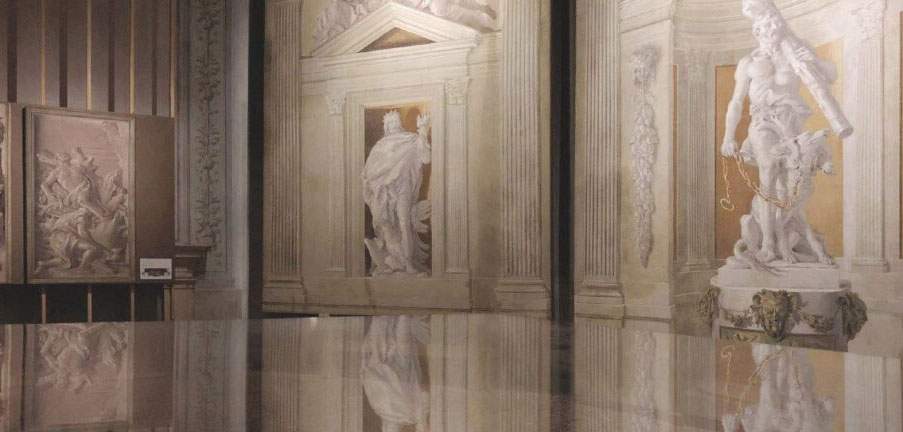Important frescoes by Giandomenico Tiepolo (Venice, 1727 - 1804), son of Giambattista, which were once kept at a private residence of the Valmarana family, will become state property. The works were once kept at one of the residences of the Valmarana family in Vicenza, historic patrons of Tiepolo father and son. They were works that were in danger of being lost during World War II, under bombing: they were saved, however, by Fausto Franco, ancestor of the current owners(Camillo and Giovanni Franco), who convinced the Vicenza Superintendency to tear out the frescoes and secure them.
Recently the frescoes transported on canvas had been given on loan to the Palladio Museum in Vicenza, which has been exhibiting them continuously since 2017: they are back in the news because they are the subject of a negotiation between the current owners and Alessandro Benetton, who was supposed to buy the seven torn frescoes for the sum of 1,850,000 euros. The case was raised last week, however, first by a warning from Codacons and then by an Il Fatto Quotidiano article, and a few hours later the state announced that it had decided to exercise its right of first refusal on the work (provided for in the Cultural Heritage Code for goods of exceptional historical and artistic interest, and in this case the interest had been declared by decree of July 3, 1989), which provides for the possibility for the state to buy the work at the price established by the parties. The report of alienation, the MiC press office lets us know, came on May 13, after which again the Ministry of Culture let it be known that the decision to exercise the right of pre-emption came after “a careful evaluation by the Superintendence of Rovigo, Verona and Vicenza, the assent of the General Directorate of Archaeology, Fine Arts and Landscape, and the positive opinion expressed today by the Technical Scientific Committee for the historical and artistic heritage.” It is not known, however, whether the MiC’s decision was in any way accelerated by the media uproar aroused by the affair (the ministry’s press office, whom we asked to explain the steps of the affair, was unable to provide us with answers to reconstruct the timing of the operation).
“In this period,” said Cultural Heritage Minister Dario Franceschini, “we are trying, after many years when it was no longer being done, to acquire as many works as possible for the state with the available resources. These are important works, it is right that they remain public property.” Great satisfaction, then, from many, because the seven precious frescoes will become public property. Not everyone, however, agrees on the goodness of the operation: for art historian Vittorio Sgarbi, who spoke about the affair in Il Giornale, it is a waste of money (so headlines the article). For Sgarbi, the “statist narrative” that has pushed about the need to prevent the deal on private individuals from going through has imposed “real blackmail with false narratives.” Sgarbi cites the examples of many private individuals who make their works accessible to the public: even the Benetton family, he points out, expresses itself on a cultural level with the Fondazione Benetton Studi e Ricerche. “Grave error it is, today,” the art historian therefore concludes, “that Minister Franceschini, ill-informed about the affair of the Valmarana frescoes, provides an unnecessary pre-emption, when the simple bond to the city of Vicenza established by the Superintendence was enough, with some easements requested from the Benetton family or foundation, which does not mean absolute evil.”
Photo: Palladio Museum
 |
| Tiepolo's seven frescoes will go to the state. But there are also those who disagree |
Warning: the translation into English of the original Italian article was created using automatic tools. We undertake to review all articles, but we do not guarantee the total absence of inaccuracies in the translation due to the program. You can find the original by clicking on the ITA button. If you find any mistake,please contact us.